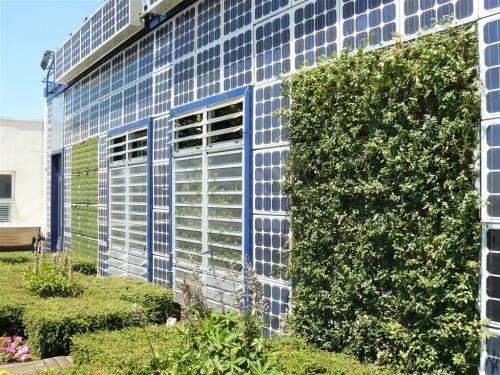New model to predict the thermal performance of vegetal façades

After years of monitoring different experimental buildings, a group of researchers from the School of Architecture of Universidad Politécnica de Madrid has developed a model that can estimate the thermal performance of vegetal façades. Therefore, this model is an effective tool for assessing energy saving associated with vegetal façades installations in addition to having thermal benefits for the users of these buildings.
In recent years, energy and environmental problems have increased in Spain and worldwide. The construction industry, which is the most energy-intensive sector, produces 36% of the CO2 emissions in the European Union.
Thus the need to find alternatives in the building field that involve reduced environmental impact and an improvement of user welfare. In this context, the inclusion of vegetation into places and elements of architectural and urban design constitutes one of the most ancient and interesting bioclimatic strategies, incorporating both the building and the surrounding ecosystem.
Nowadays, the inclusion of vegetal systems in architecture can be used as a mean to increase the green area in cities through vegetal covering, which promotes energy savings and gives answers to specific environmental conditions. Over recent years, researchers have carried out numerous studies on the potential of these vegetal coverings in the construction field.
In most cases, researchers focus on the analysis of energy performance of these types of enclosures. Other studies assess the effects of its application on buildings and the environment from very diverse points of view: thermal effects, reduction of the urban heat island, regulation of the water cycle, air quality and acoustic comfort effect. Thus, the research conducted by the School of Architecture of UPM has shown that using vegetal elements in façades in places with climatology like Madrid can have benefits for the building both in winter and summer. This model takes into account passive cooling strategies and an improvement of comfort conditions for users during warm seasons.
This new model was developed from data taken in experimental buildings made available by the Intemper S.A Company. They have developed a model that has been verified with a very high degree of reliability. It is a practical model which is rapid and easy to use for any technician of the construction sector. Additionally, the data for implementing the model is freely available.
This model aims to provide a tool for all those who work on the usage and development of vegetal façades. This model is affordable, reliable and allows users to estimate the benefits derived from its usage as an alternative to other types of façades.
Provided by Universidad Politécnica de Madrid


















